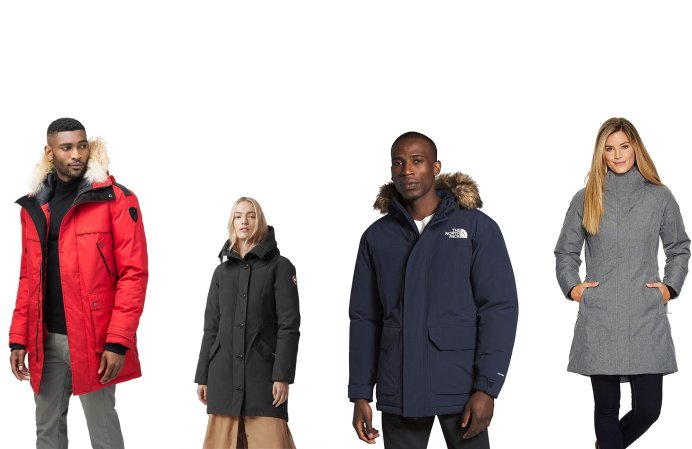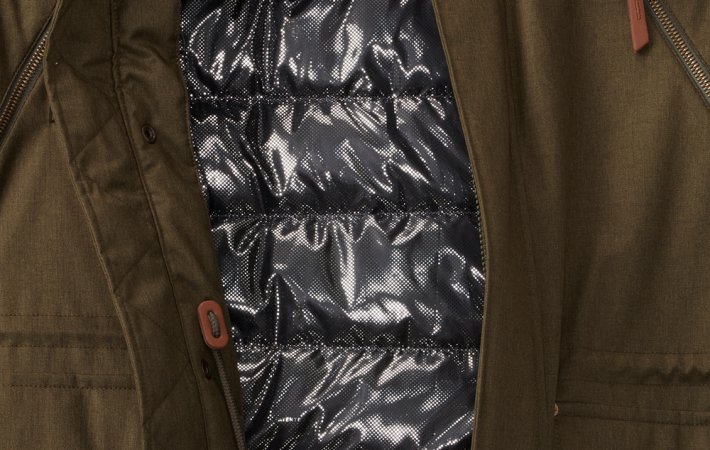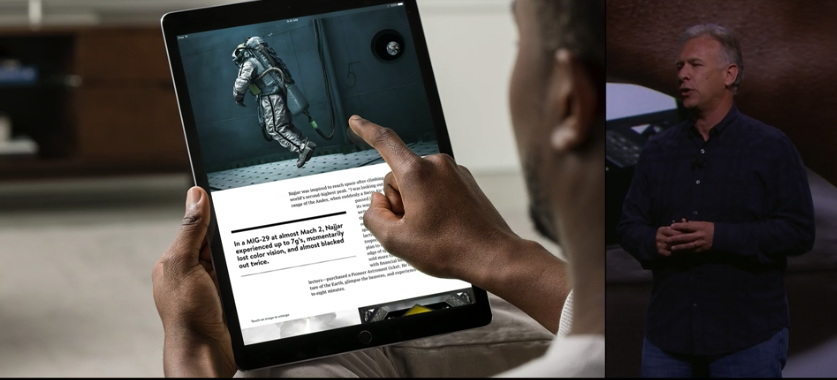

We may earn revenue from the products available on this page and participate in affiliate programs. Learn more ›
If you’ve ever sported a waterproof, breathable rain jacket, you can credit a special kind of membrane in it for keeping you dry, but letting your sweat escape. The technology behind membranes like these dates back decades to a discovery made by Bob Gore, which led to Gore-Tex—but now The North Face has created its own version of the tech. It’s called Futurelight.
Rain jackets are more than just a membrane. They usually consist of three layers: an outer textile that the big fat rain droplets hit first, then that porous membrane, then another layer that’s against your skin. They come in different variants, but that’s the general construction. The innovation that the North Face is crowing about the loudest with Futurelight pertains to that membrane in the middle, which must have pores in it small enough to prevent water from penetrating, but large enough to let water vapor molecules through.
To create it, the company begins with a liquid solution of polyurethane, explains Jason Israel, the global creative director of performance at The North Face. The company then expels that solution through some 200,000 tiny nozzles, spraying it and “almost turning it into this fibrous state,” Israel says. That process creates a film—the membrane—as they spray it out onto a surface designed for them to be able to remove their creation easily.
“If you were to look at that [film] under a magnifying glass, you would almost find this spiderweb,” Israel says. “You would find this kind of fibrous structure that has these micro, nano-sized holes or openings.”
It’s that web-like material that forms the membrane, and Israel notes that they can adjust the process to create a film that’s thicker—and less breathable but more robust—or thinner, and thus better for an activity like trail running. “We can actually really go in and start to tune, and decide,” he says, “how much of that solution, or how much of those fibers, do we want to end up spraying?” Tweaking the thickness of the membrane affects how porous it is. That makes sense, because different activities and settings demand gear that’s light, or heavy, or somewhere in between.
I’ve had the chance to test out two pieces of gear, both of which incorporate Futurelight, on rainy New York City sidewalks—not exactly the woods or the snowy side of a mountain, but wet nonetheless. My favorite, and the best suited for me, was the lightweight, soft, supple, and stretchy Flight-series jacket designed for trail running. I felt comfortable wearing it as I walked around the dreary urban environment, and most important, it kept me dry. The heavy rain formed pleasant little beads on the outside of the jacket without making it inside to my cotton shirt. (That beading on the surface comes from the durable water repellent finish, or DWR, on the garment, which coats the outer textile.)
Of course, The North Face’s Futurelight material isn’t the only piece of technology out there in the world of waterproof, breathable membranes. Gore-Tex is the most familiar and storied—it stems from Bob Gore’s serendipitous moment, in October, 1969, when he stretched, or expanded, a Teflon-like material. That substance was PTFE, or polytetrafluoroethylene. (PTFE, by the way, was an early component in artificial hips, but it failed disastrously because it was too soft.) Expanded PTFE is still the basis for the Gore-Tex membrane today, and the company can tweak its thickness and the size and structure of the pores in it, plus the other components of the jacket, depending on how robust they want the garment to be.
Plus, Outside compares Futurelight, in their review of the new tech, to a waterproof, breathable fabric from Polartec called Neoshell, as well as a solution from Outdoor Research.
In other words, The North Face’s Futurelight is just one modern approach to creating gear we can all wear outdoors comfortably in the rain, permitting our sweat to escape and keeping the drizzle away from the clothing beneath the jacket.















